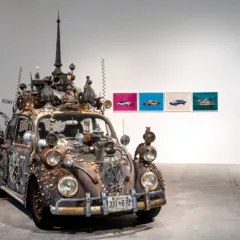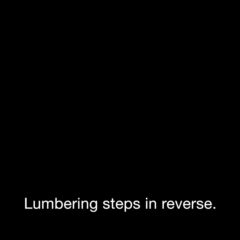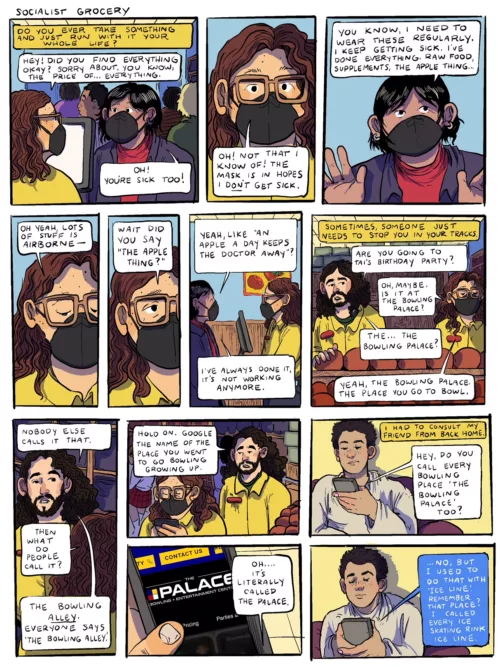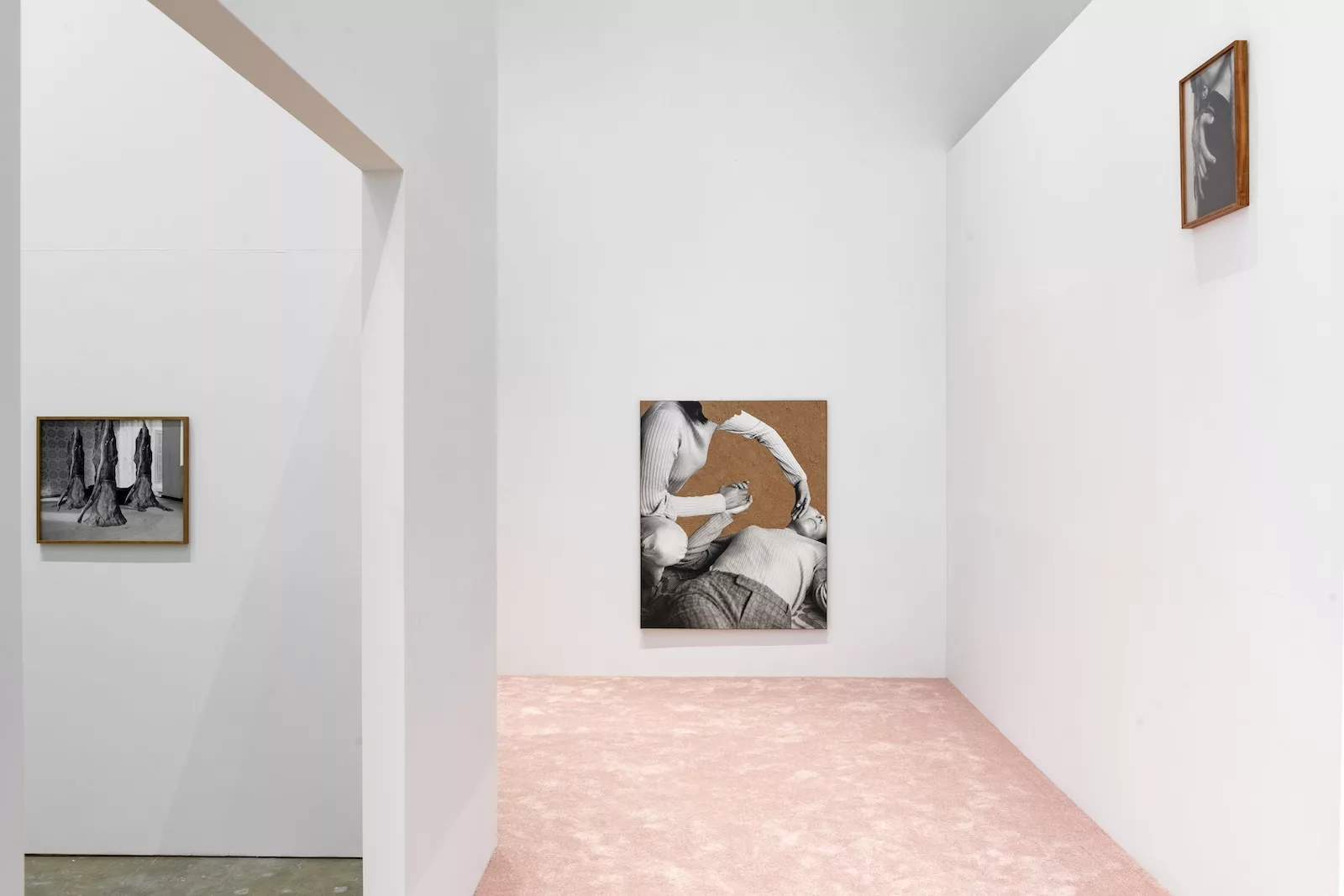
The first image you see on entering Joanna Piotrowska; unseeing eyes, restless bodies is a small photograph: a tightly-framed image of one person touching the cheek of someone who looks to be lying in bed. But three hands are visible, placed so they appear to belong to three different people: the toucher, the touched, and another; meaning someone else is watching. The photograph itself is placed within the picture frame as if it had slipped from its usual position, both down and to the right, where it nestles in the corner. This work introduces subjects that pervade the exhibition: the sense of uncertain narrative, domestic space as a place of refuge and of isolation, intimacy via touch, and physical relationships that threaten danger.
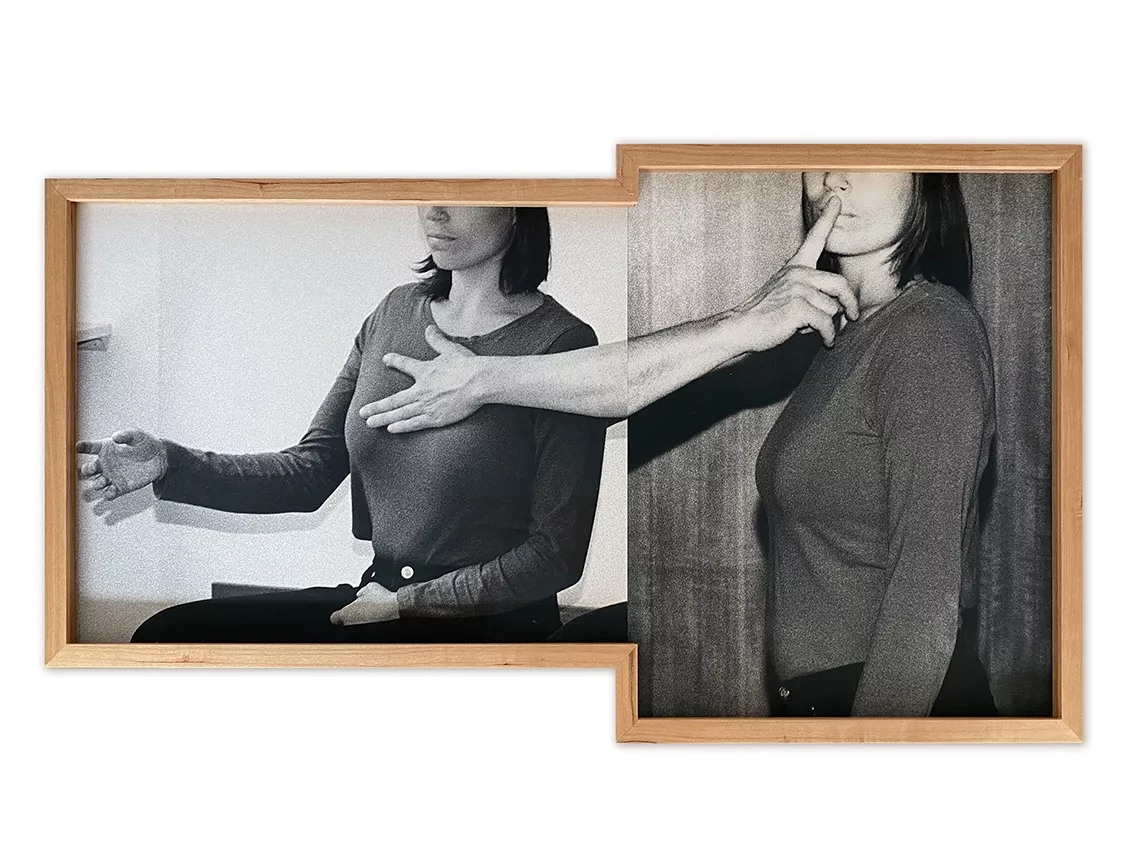
The exhibition is arranged as two rooms facing each other; both are carpeted in boudoir-pink. Seeing such clearly domestic floor covering in the ICA gives a jolt and immediately establishes Piotrowska’s setting, and hence subject. We are at home. Each room contains a smaller room and together they form a single installation, with a six and a half minute video in the room behind the first that works well as a thematic introduction, even though it was conceived separately. Photographs and photo-collages of varying size are placed deliberately, like furniture, throughout both rooms and the corridors formed around them. They are hung at greatly varying heights, with no consistent horizon line. Some photographs require close viewing; others need space in order to take them in.
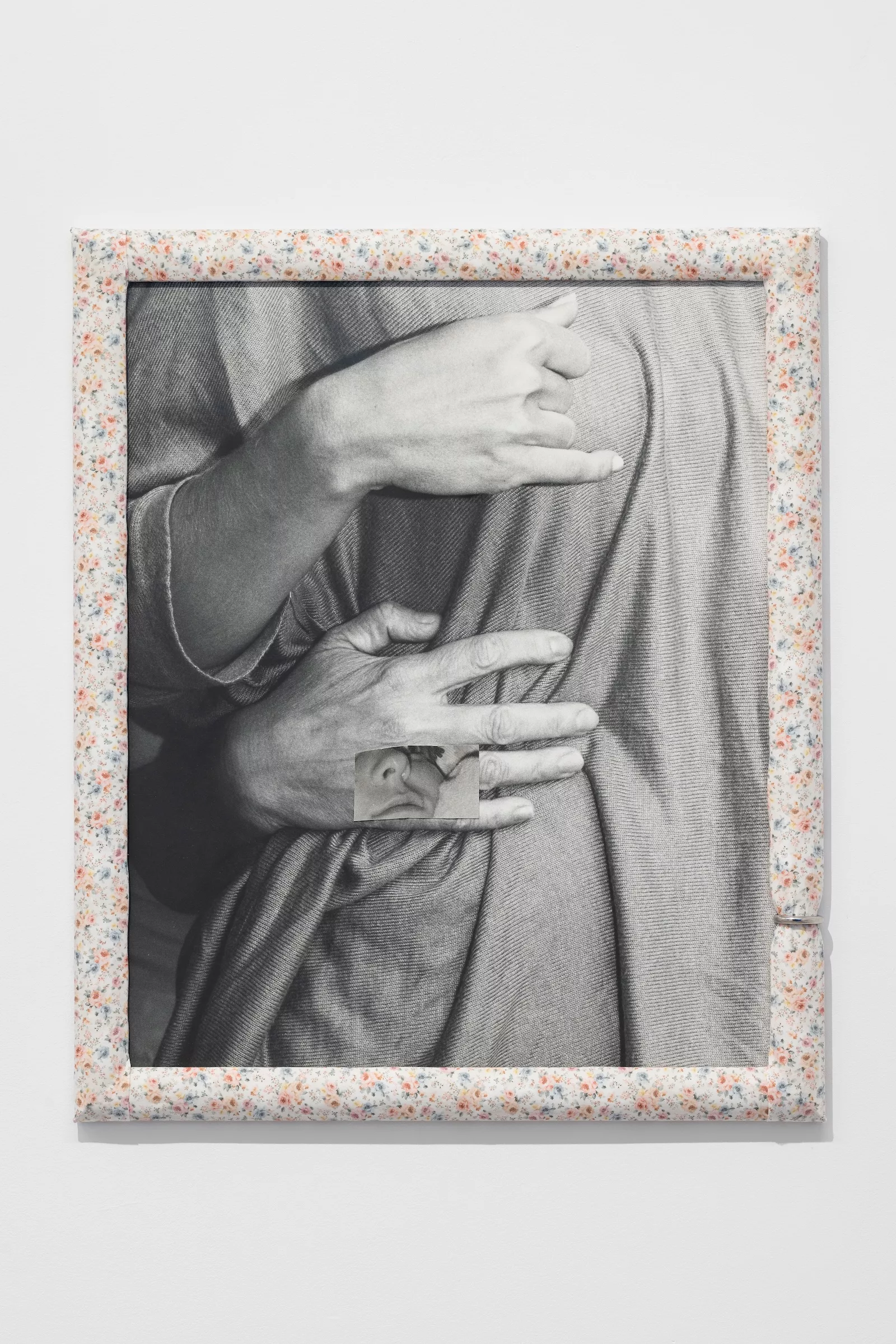
The video, “Tactile Afferents,” was commissioned by the National Museum, Oslo, for an exhibition in 2023. It was shot on a sheep farm, and we are assured in a text at the beginning that the sheep were not grown to be slaughtered as food and no animals were hurt by the filming. That turns out not to relieve viewers of all tension about the animals’ comfort and care. The video shows close-up views of sheep and their handlers, whose faces we never see, in a sequence of brief situations. A voiceover is taken from the philosopher, Richard Kearney’s book, Touch: recovering our most vital sense, that emphasizes the reciprocity of touch in relationships: “We can see without being seen,…but we can never touch without being touched in return…” It makes repeated reference to “tact,” but isn’t concerned with social relations or decorum but “touch.” “Tact’ derives from the Latin, “tactus,” to touch or handle. We sense that Kearney is talking about humans, not animals, and so is Piotrowska in her rooms furnished with suggestive photographs.
One group of photographs distributed through both rooms shows people inside jerry-rigged structures made of domestic furnishings, as in the common children’s activity. The structures are clearly provisional, and no one looks like they are having fun. Another group, hung in proximity to each other, shows women in the midst of awkward activities or in odd poses that might be exercises for actors or acting out as a therapeutic activity; the artist has acknowledged her interest in the formalized movements of dance, in therapies that involve the body and in self defense methods that employ specific bodily postures.
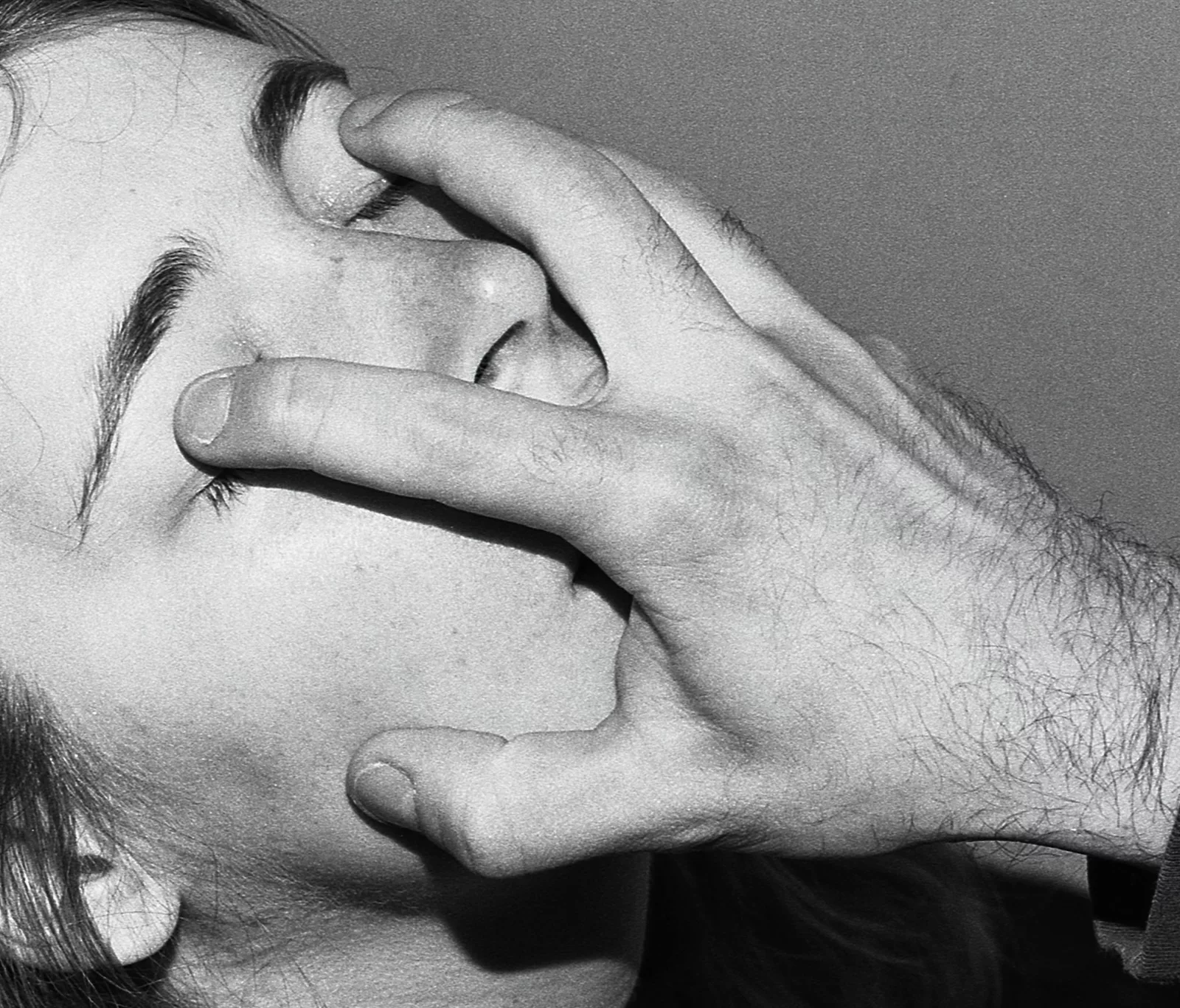
The largest group of works reveals one person touching another, and many of these raise the question of what happened just prior to the touch, or what will occur next. These photographs rarely show faces, so we do not have the usual clues to the participants’ emotions. In two large photo-collages the artist has excised part of the image to reveal a wood support, so that one of the figures becomes a ghostly presence. Has she died? Is she the black sheep of the family whose photograph can no longer be displayed?
Several images suggest coercive touch: in a pair of photographs framed together and hung at the exhibition’s entrance, a man’s hand is placed on a woman’s chest in a gesture that is hard to read, but in the image to its right, his pointer finger touches the woman’s mouth in the conventional sign of “shhhhh,” “be quiet.” What is she not supposed to reveal? Another disturbing photograph shows someone’s head obscured by fabric, thicker than a stocking, that leaves only slight indications of facial features; but we also have a glimpse of hands holding the fabric over the person’s head. This is someone restrained and hidden, with the implication that the person restrained is unwilling.
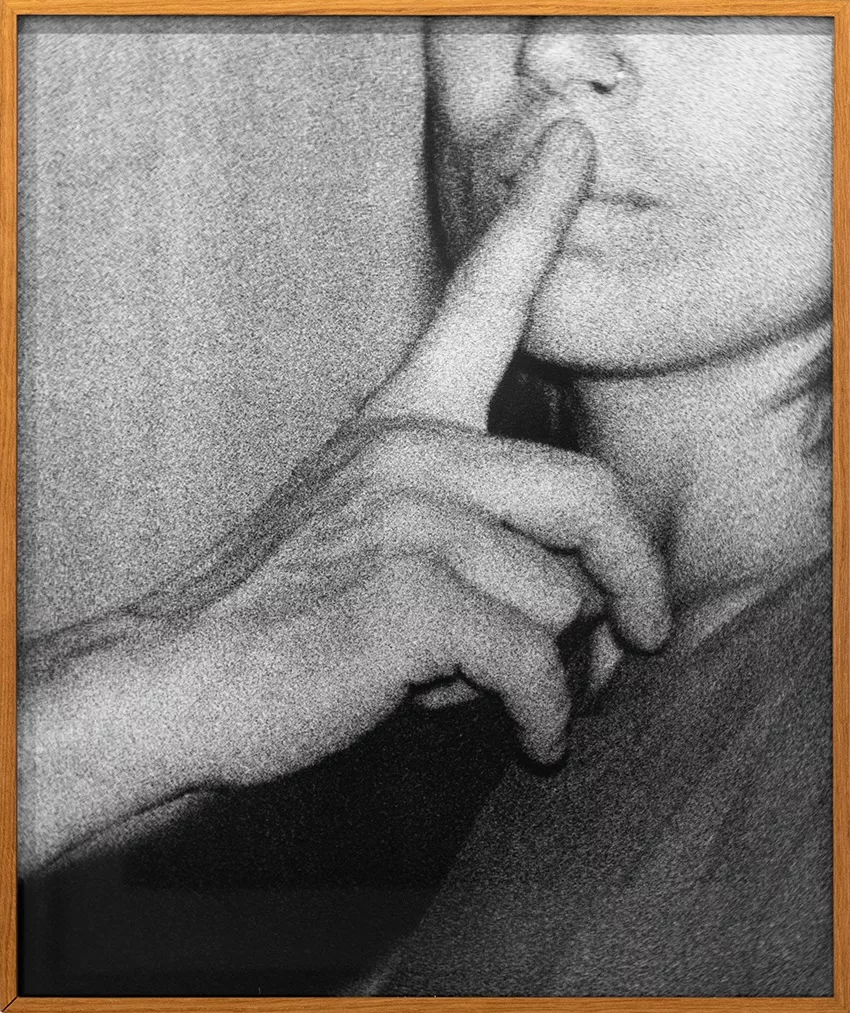
The second room also displays a tapestry made from a child’s drawing, with repetitive, intense markings indicative of anxiety or anger. The entire installation looks in upon itself. The photographs might depict dreams or memories. But what’s outside the home doesn’t matter. We are all familiar with communal, domestic spaces, so it is easy for the viewer to personalize the images, filling in the faces that the artist doesn’t show and adding our own stories. Joanna Piotrowska; unseeing eyes, restless bodies does not tell a specific story, but it creates a powerful, emotional impact. Piotrowska suggests that we, and women in particular, are not always safe at home, and that danger lies within the domestic arrangement itself.
Joanna Piotrowska; unseeing eyes, restless bodies, Institute of Contemporary Art, University of Pennsylvania, through Dec. 1, 2024)
Read more articles by Andrea Kirsh on Artblog.



